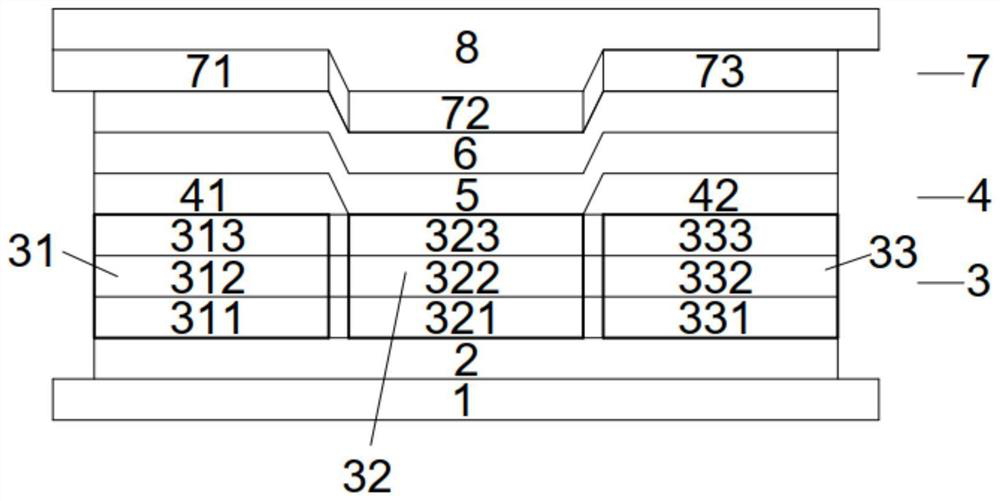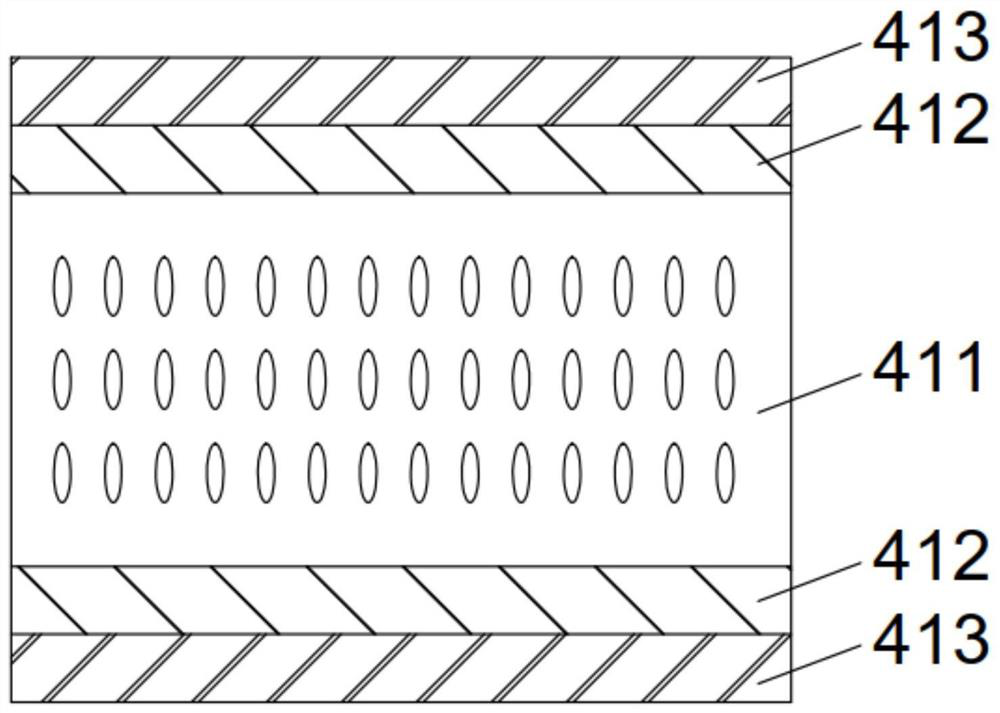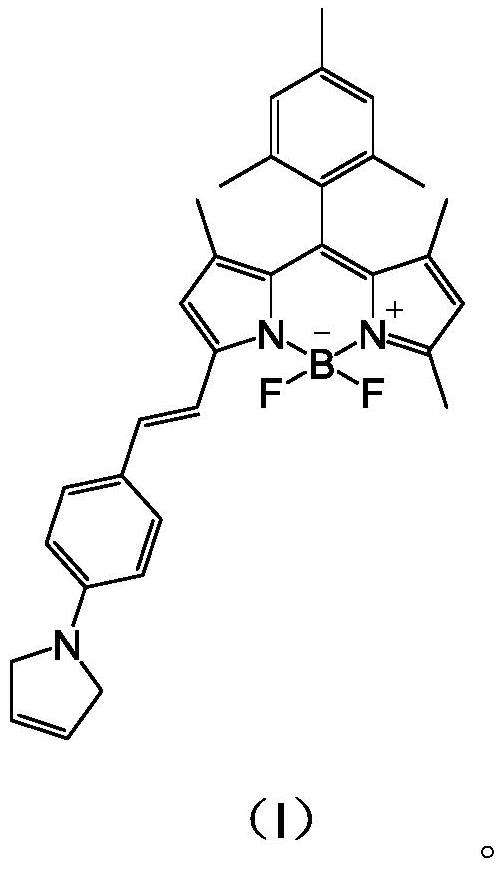Wavelength-adjustable organic light-emitting device
A technology of electroluminescent devices and organic light-emitting layers, applied in the direction of electric solid-state devices, electrical components, luminescent materials, etc., can solve the problems of light wavelengths that cannot meet people's needs, and can not be adjusted, so as to increase the density of common rail electron clouds, The effect of enhanced electron loss capability and improved resolution
- Summary
- Abstract
- Description
- Claims
- Application Information
AI Technical Summary
Problems solved by technology
Method used
Image
Examples
Embodiment 1
[0042] This embodiment provides an organic electroluminescent device with adjustable wavelength, such as figure 1 As shown, it includes a substrate 1 , a total reflection layer 2 , an organic light-emitting unit 3 , an optical path control layer 4 , a transflective layer 5 , a light extraction layer 6 , a filter layer 7 and an encapsulation layer 8 which are sequentially stacked.
[0043] The substrate 1 includes a substrate, a thin film transistor (TFT) array layer and a flat layer, the thin film transistor (TFT) array is arranged on the substrate, and the flat layer is arranged on the thin film transistor (TFT) array structure. The substrate can be made of various materials such as glass, plastic, silicon or metal; in this embodiment, the substrate is made of glass.
[0044] The total reflection layer 2 is disposed on the substrate 1 and is used for reflecting the light emitted by the organic light emitting unit 3 as much as possible so as to improve the light extraction eff...
Embodiment 2
[0073] This embodiment provides a preparation method of a red fluorescent dye having a structure of formula (I), comprising the following steps:
[0074]
[0075]Under anhydrous conditions, the commercially available compound (I-1) (2mol, 732.42g), p-fluorobenzaldehyde (2mol, 248.06g), and trifluoromethanesulfonic acid (0.5mol, 75.04g) were dissolved in 50L of toluene, Stir to dissolve; heat to 100°C, add 3ml of 2,5-dihydro-1H-pyrrole, heat up to 130°C and reflux for 5 hours; naturally cool to room temperature, add saturated sodium bicarbonate solution, extract with dichloromethane, and distill under reduced pressure The product (I) is obtained.
[0076] Product (I) chemical formula: C 33 h 34 BF 2 N 3 ; m / z: 521.28 (100.0%), 522.28 (35.7%), 520.29 (24.8%), 521.29 (8.9%), 523.29 (5.1%), 522.28 (1.1%), 523.29 (1.1%); elemental analysis: C, 76.01; H, 6.57; B, 2.07; F, 7.29; N, 8.06.
Embodiment 3
[0078] This embodiment provides a method for preparing a green fluorescent dye with a structure of formula (II), comprising the following steps:
[0079]
[0080] Under a nitrogen atmosphere, a pentane solution of tert-butyllithium (1.5M, 12mmol) was slowly added to a solution of compound (II-1) (10mmol) in tert-butylbenzene (120ml), then heated to 120°C for 1.5 hours . After the reaction, cool down to -15°C, slowly add boron tribromide (15mmol), stir at -5°C for 0.5 hours, then continue to stir at 10°C for 1 hour, rise to 35°C, add N,N-diisopropyl Ethylamine (20 mmol), continued to heat up to 150° C. and continued the reaction for 3 hours before stopping. Distilled under reduced pressure and passed through a silica gel column (developing solvent: ethyl acetate:petroleum ether=30:1) to obtain the product (II).
PUM
| Property | Measurement | Unit |
|---|---|---|
| thickness | aaaaa | aaaaa |
| thickness | aaaaa | aaaaa |
| thickness | aaaaa | aaaaa |
Abstract
Description
Claims
Application Information
 Login to View More
Login to View More - R&D
- Intellectual Property
- Life Sciences
- Materials
- Tech Scout
- Unparalleled Data Quality
- Higher Quality Content
- 60% Fewer Hallucinations
Browse by: Latest US Patents, China's latest patents, Technical Efficacy Thesaurus, Application Domain, Technology Topic, Popular Technical Reports.
© 2025 PatSnap. All rights reserved.Legal|Privacy policy|Modern Slavery Act Transparency Statement|Sitemap|About US| Contact US: help@patsnap.com



